Flower Glossary is reader-supported. When you buy through links on our site, we may earn an affiliate commission.
The poppy is widely distributed throughout England and certain areas of Scotland, but even if you’ve never seen a poppy in person, you probably have an inkling of some of this flower’s symbolic meaning.
In addition to being a strikingly beautiful, aromatic flower with medicinal properties, the poppy is a plant steeped in symbolism.
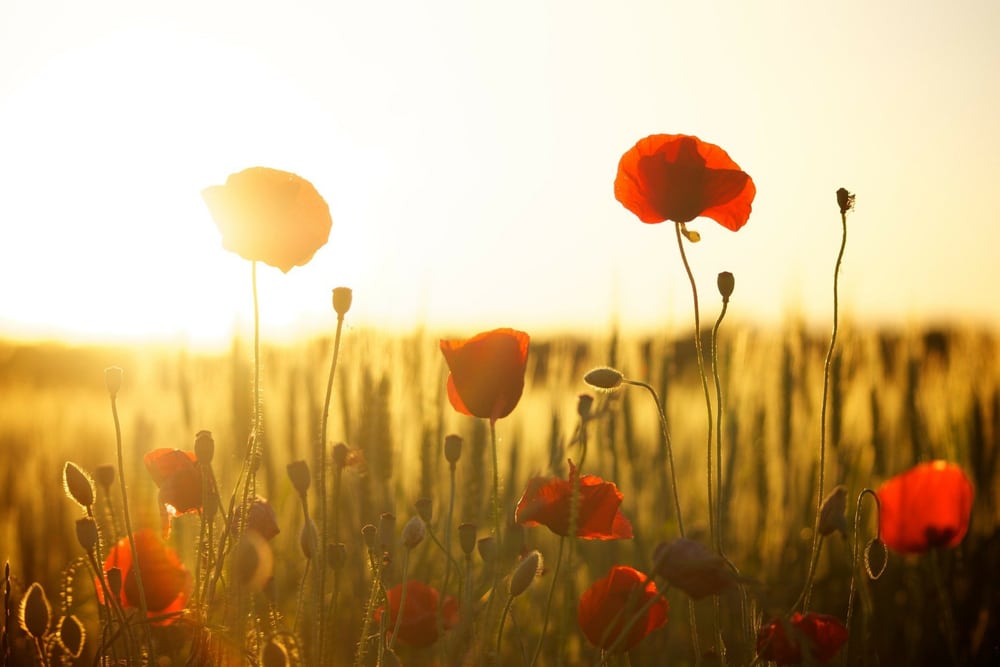
From darker themes such as death and war to hopes of peace, luxurious living, and imagination, the poppy represents many aspects of the human experience.
Today, we will be exploring some of the most common symbolic meanings of the poppy. We will also be delving into the etymology of this flower’s name to better understand how its associations have formed over time.
Table of Contents
Etymology
The word ‘poppy’ comes from the Old English word ‘popig.’ This Old English word is thought to be derived from the Latin word ‘papaver.’ There has been some speculation amongst linguistic scholars that the intended root of ‘papaver’ is ‘pappe,’ which means ‘to eat.’
The theory that the word ‘poppy’ may initially derive from the Latin for ‘to eat’ makes perfect sense because of the medicinal effects of consuming parts of the poppy flower – particularly its milk.
Poppies contain many opiates, including codeine, morphine, and thebaine. While these substances can, of course, be harmful when consumed outside of medicinal applications, they are also effective pain relief agents and can induce sleep while settling the nerves.
With that being said, we should stress that the poppy is not suitable for consumption in its raw or unprepared form. In fact, it can be highly toxic and even lethal.
Symbolic Meanings
Death and War
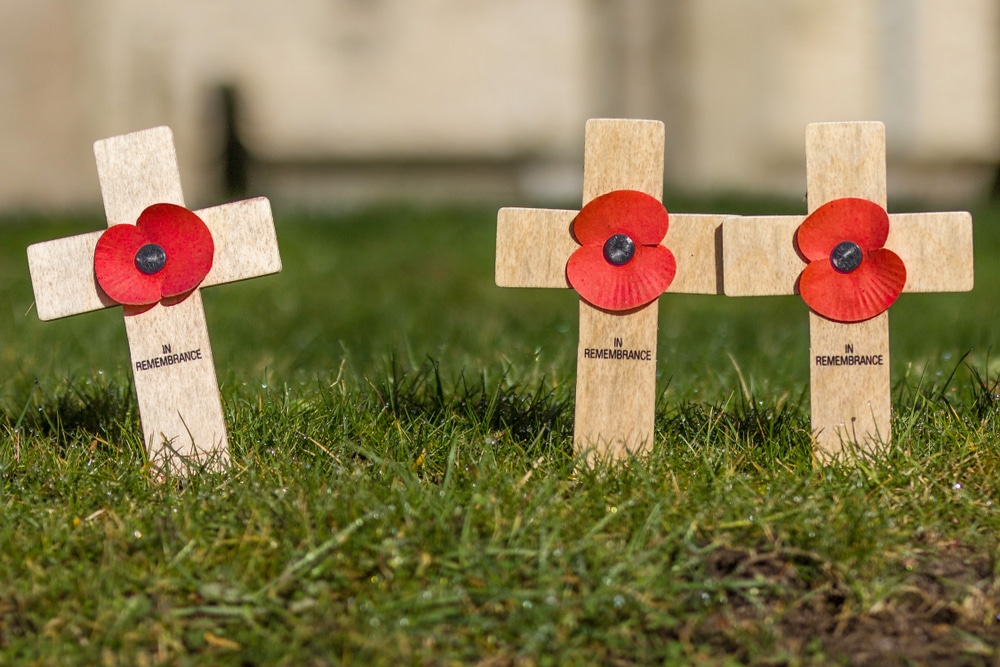
The most common symbolic association of the poppy is not a cheerful one, but it has come to the foreground of the plant’s symbolic meaning for good reason.
Poppies are typically worn around Remembrance Day as a way of honoring the dead of World War I.
It was very common to find poppies on the western front during the First World War, and this is part of the reason why this flower is so closely associated with war and the casualties of war.
Of course, the common blood-red coloring of the flower (although white, pink, and blue poppies also exist) helps to reinforce this association.
The poppy flower has inspired several pieces of art related to the First World War, including the famous poem, In Flanders Fields, by John McCrae (1915).
Peace and Hope
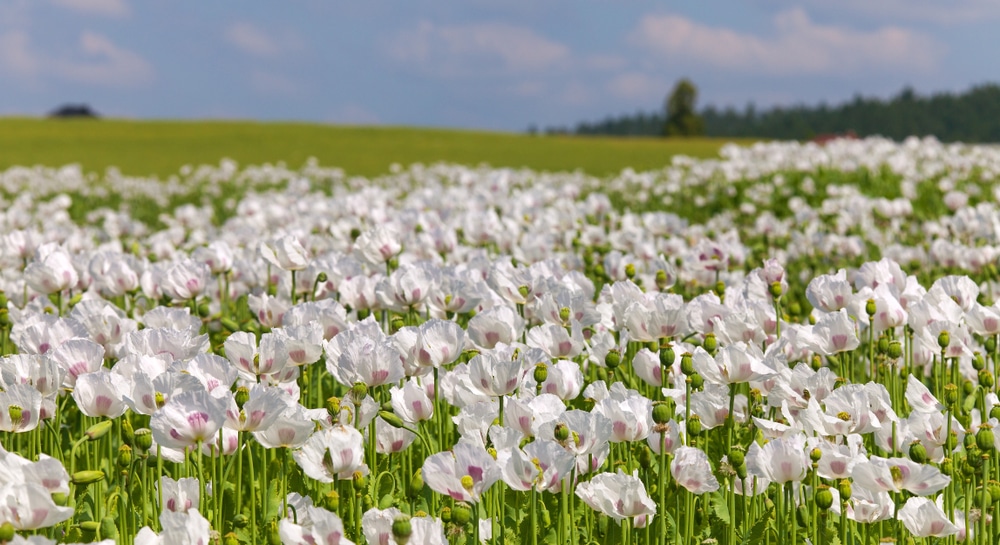
Although the poppy is closely tied to themes of death and war, on the other side of the coin, it is also associated with peace and hope.
While many people instinctively associate the red poppy with peace as well as death because hope for a peaceful future seems a natural response to the destruction of war, the reinforcement of the poppy’s symbolism of peace has gained traction in recent years.
The color white has always been associated with peace. As early as 1933, the year before the Peace Pledge Union was officially founded, people began wearing white poppies to foreground the need for commitment to peace in the future.
The white poppy became a promise that the horrors of the First World War should never be repeated.
Thus, since 1933, the white poppy has been introduced as a symbol of peace around Remembrance Day in an effort to centralize hope for peace in the future in addition to mourning for the dead.
Luxury and Success
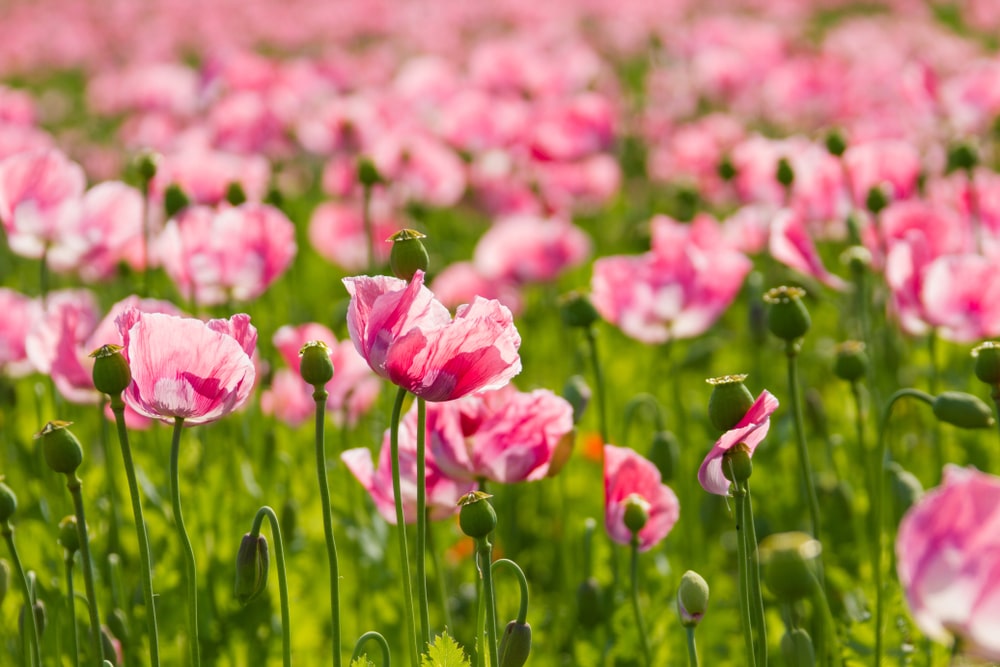
In the Western world, the poppy is primarily associated with the themes that we have discussed above: death, war, and peace.
However, in Eastern countries, the associations of the poppy are very different. In these cultures, the poppy is most likely to be viewed as a symbol of success or even luxury.
It is likely that the poppy has gained these associations because of its bright colors and tendency to grow in large quantities over vast areas such as fields.
The image of a vibrant poppy field spanning as far as the eye can see certainly conjures up feelings of prosperity and abundance.
Pink poppies, in particular, tend to be seen as a symbol of success, prosperity, abundance, and luxury.
Imagination and Mysticism
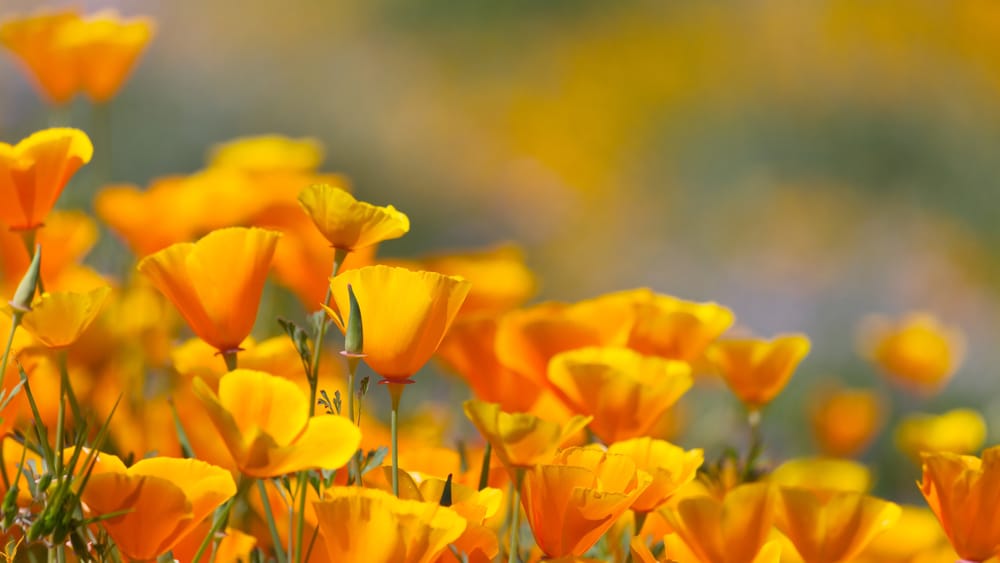
Finally, there is also a strong cross-cultural association of the poppy with imagination, mysticism, and magic.
This is probably due to the fact that the opiates contained within the poppy flower can produce hallucinations when consumed in large quantities. The poppy’s opiates are also commonly used for sedation and sleep, so the poppy is associated with vivid dreams.
The symbolic association of the poppy with imagination, dreams, and magic can be seen in many areas of popular culture.
Perhaps the most iconic example is the poppy field scene in The Wizard of Oz (1939), where Dorothy and her friends find themselves drawn to a magical poppy field that sends them into a deep sleep.
Final Thoughts
In short, the poppy flower is associated with various events, themes, and areas of life, some of which are as diverse as to seem conflicting.
The symbolism of the poppy can vary from culture to culture and according to the poppy’s color.
In the Western world, red poppies are most often seen as a symbol of war, death, or peace. The association with peace is strongest with white poppies, however.
In Eastern parts of the world, the poppy has more positive connotations of prosperity, abundance, and success, particularly if the poppy is pink.
The poppy has also been linked with magical and mystical powers as well as imagination and dreaming.